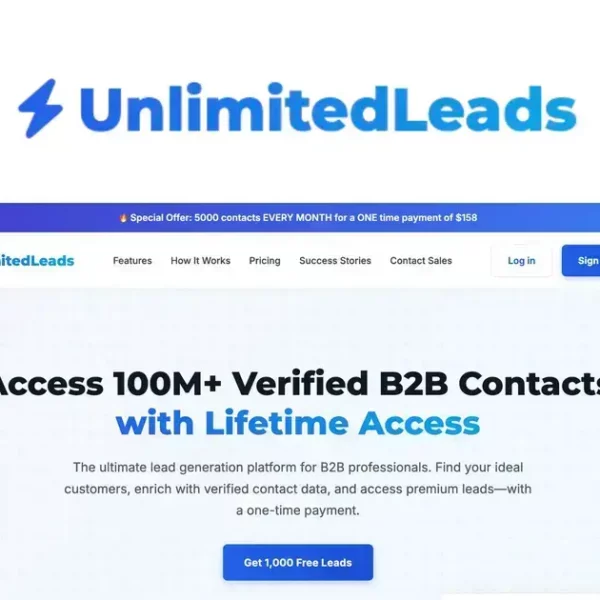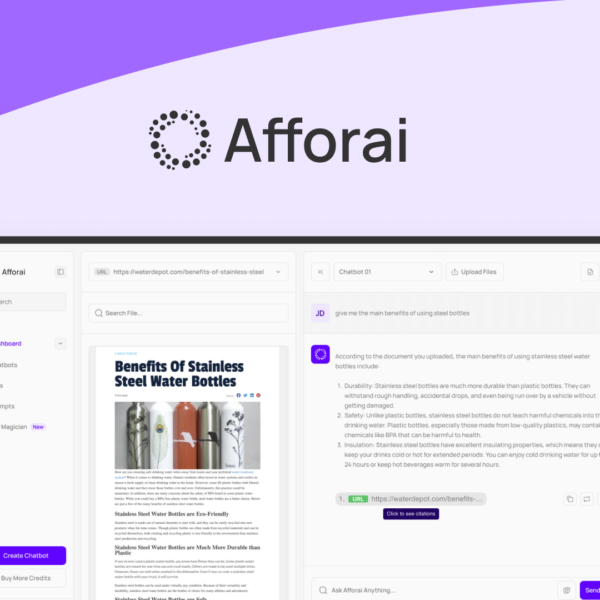Highlevel features enhance business efficiency by automating tasks, improving customer interactions, and providing valuable data insights. These advanced capabilities enable businesses to streamline operations, make informed decisions, and optimize strategies for improved growth and competitiveness.
If you’re looking to elevate your marketing game, understanding highlevel features is crucial. These advanced functionalities are designed to optimize your business processes and improve customer engagements. In this article, we delve into what these features entail, how they can radically enhance your marketing strategies, and tips for integrating them seamlessly into your operations.
Understanding Highlevel Features
Understanding highlevel features is essential for maximizing your marketing efforts. These features are designed to streamline and enhance various processes in your business. For instance, automation tools can help you generate leads more efficiently, manage customer relationships effectively, and analyze data with precision.
What Are Highlevel Features?
Highlevel features refer to advanced capabilities within marketing platforms that allow businesses to elevate their strategies. These can include customer segmentation, advanced reporting, and integrations with other software tools. By leveraging these features, businesses can create personalized experiences for their customers.
The Importance of Highlevel Features
Utilizing highlevel features can lead to better engagement and higher conversion rates. When businesses understand and implement these features, they can tailor communication and offers to specific audience segments, which boosts the likelihood of success.
Examples of Highlevel Features
Some common examples of highlevel features include campaign management tools, detailed analytics, and customer journey mapping. These features help businesses track customer interaction and refine their strategies based on data-driven insights.
Getting Started with Highlevel Features
To start taking advantage of highlevel features, businesses should first assess their current marketing tools and identify any gaps. Many platforms offer training and resources to help users learn how to implement these features effectively. Additionally, experimenting with various tools through trial periods can be beneficial for understanding which features align best with your business goals.
Top Highlevel Features You Need to Know

When exploring highlevel features, it’s important to identify the key capabilities that can significantly enhance your marketing efforts. Below are some top features that every business should consider.
1. Automation Tools
Automation is a game-changer for businesses looking to save time and eliminate repetitive tasks. With automation tools, you can schedule emails, post on social media, and manage leads without manual effort. This allows your team to focus on more strategic activities.
2. Customer Relationship Management (CRM)
A robust CRM system is crucial for managing customer interactions. Highlevel features in CRMs include tracking customer behavior, segmenting audiences, and personalizing communication. This leads to improved customer satisfaction and loyalty.
3. Advanced Analytics
Analytics play a vital role in understanding how your marketing strategies are performing. Highlevel analytics tools provide insights into customer engagement, campaign effectiveness, and ROI. These insights enable businesses to make informed decisions and optimize their strategies accordingly.
4. Landing Page Builders
Effective landing pages are essential for converting visitors into customers. Highlevel features often include easy-to-use landing page builders that come with templates and drag-and-drop functionality. This allows marketers to create compelling offers without needing extensive coding knowledge.
5. Integration Capabilities
Integrating various tools and platforms is essential for a seamless workflow. Highlevel features allow for easy integration with other applications, such as email marketing software, eCommerce platforms, and social media channels. This streamlines processes and improves overall efficiency.
How Highlevel Features Improve Efficiency
Highlevel features play a vital role in enhancing operational efficiency within a business. With the right tools in place, companies can significantly improve their productivity and streamline their workflows.
1. Streamlining Processes
Utilizing highlevel features allows businesses to automate repetitive tasks. This means processes like lead generation, email marketing, and customer follow-ups can be automated, saving valuable time for your team. When tasks are automated, employees can focus on strategic initiatives that contribute to company growth.
2. Enhanced Coordination
Features such as project management tools and collaborative platforms encourage better coordination among team members. By having a unified space where all updates and communications are stored, teams can minimize misunderstandings and work more cohesively. This leads to faster decision-making and more effective execution of projects.
3. Data-Driven Decisions
Highlevel features provide advanced analytics and reporting capabilities. By analyzing data trends and customer behavior, businesses can make informed decisions that align with market demands. This prevents wasteful spending and helps in targeting the right audience more effectively.
4. Improved Customer Interactions
Using highlevel features like personalized communication and chatbot integration can enhance customer interactions. By providing timely responses and tailored experiences, businesses can improve customer satisfaction and retention rates. Happy customers are more likely to become repeat purchasers.
5. Flexibility and Scalability
Highlevel features allow businesses to adapt quickly to changing market conditions. With scalable solutions, companies can adjust their operations and features as needed. This flexibility means businesses can grow without being hindered by outdated processes or systems.
Integrating Highlevel Features into Your Business

Integrating highlevel features into your business can greatly enhance its efficiency and effectiveness. Below are crucial steps and considerations for successful integration.
1. Assess Your Current Tools
Before integrating highlevel features, evaluate the tools you currently use. Determine what is working well and what needs improvement. This assessment helps identify the gaps that highlevel features can fill.
2. Define Clear Objectives
Setting clear objectives is vital for a smooth integration. Decide what you want to achieve by incorporating these features, such as improving customer engagement, increasing efficiency, or better data tracking.
3. Choose the Right Platforms
Select platforms that offer highlevel features suitable for your business needs. Look for tools that integrate well with your existing systems and provide user-friendly interfaces for your team.
4. Provide Training for Employees
Training is essential when introducing highlevel features into your operation. Ensure that your team understands how to use the new tools effectively. Arrange workshops and sessions to familiarize employees with the platforms.
5. Monitor and Optimize
After integration, continuously monitor the effectiveness of highlevel features. Analyze data and performance metrics to ensure they meet your objectives. Be ready to make adjustments as necessary, refining processes for better results.
Troubleshooting Common Highlevel Features Issues
Troubleshooting common issues with highlevel features can save time and improve overall productivity. Here are some common problems and solutions to consider.
1. Difficulty Logging In
If users are having trouble logging into their accounts, first ensure that they are entering the correct credentials. If the problem persists, try resetting passwords or check if there are any system outages reported from the service provider.
2. Features Not Working as Expected
Sometimes, features may not function correctly. Before panicking, test the features in different browsers or devices to rule out any compatibility issues. Additionally, clear the cache and cookies of the browser to resolve potential glitches.
3. Slow Response Times
If the platform is running slowly, check for internet connection issues first. Also, verify if there are too many active users on the platform at the same time. If slow performance continues, consider reaching out to customer support for assistance.
4. Data Not Syncing
Data synchronization issues can disrupt business operations. Verify that the integration settings are correct and that APIs are functioning as intended. Ensuring that the platform is updated to the latest version can also help prevent sync problems.
5. Understanding Feature Limitations
Each highlevel feature usually comes with specific limitations. Make sure to review the documentation provided by the platform. If the limitations affect your workflows significantly, consider discussing alternatives with the customer support team.
Embracing Highlevel Features for Business Success
Understanding and integrating highlevel features into your business can lead to greater efficiency and productivity. These features help automate tasks, improve customer interactions, and provide valuable insights into your operations.
By addressing common issues and ensuring proper training, teams can fully leverage these tools. As your business grows, adapting to new technologies will enable you to stay competitive in the market.
Finally, do not underestimate the potential of highlevel features to transform your business and unlock new levels of growth.
FAQ – Frequently Asked Questions about Highlevel Features
What are highlevel features?
Highlevel features are advanced capabilities within marketing platforms designed to optimize business operations, improve customer interactions, and enhance data analysis.
How can highlevel features improve my business efficiency?
These features automate repetitive tasks, streamline processes, and provide insights into customer behavior, allowing your team to focus on strategic initiatives.
What should I do if a highlevel feature is not working properly?
First, ensure your login credentials are correct and check for compatibility issues. If problems persist, clearing the browser’s cache or contacting support can help.
How do I choose the right highlevel features for my business?
Assess your current tools, define your objectives, and select features that align with your business needs and can easily integrate with existing systems.
Are highlevel features suitable for small businesses?
Yes, many highlevel features are designed to be scalable and accessible for small businesses, helping them compete more effectively in their markets.
How can I train my team to use highlevel features effectively?
Provide regular training sessions, use workshops, and encourage hands-on practice with the tools to build familiarity and confidence among team members.




